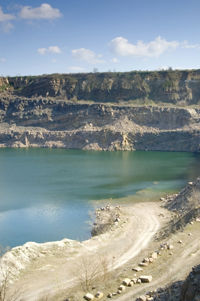 One week after a tailings pond dam burst at Mount Polley Mine near the cities of Williams Lake and Quesnel, British Columbia, environmental experts are saying it could be one of the worst tailings pond breaches in the world. Early estimates suggest that more than 2.64 billion gallons of mining waste and 4.5 million cubic meters of ground-up rock were released into Polley Lake, Quesnel Lake, Hazeltine Creek and Cariboo Creek. According to the mine’s owners 2013 mine report, substances that are disposed of on-site into the pond include arsenic, copper, lead, manganese, mercury, phosphorus, and selenium; among several other metals. Days following the breach, hundreds of local residents were banned from using the water for drinking or bathing, campgrounds were evacuated, fishing was banned and an emergency was declared.
One week after a tailings pond dam burst at Mount Polley Mine near the cities of Williams Lake and Quesnel, British Columbia, environmental experts are saying it could be one of the worst tailings pond breaches in the world. Early estimates suggest that more than 2.64 billion gallons of mining waste and 4.5 million cubic meters of ground-up rock were released into Polley Lake, Quesnel Lake, Hazeltine Creek and Cariboo Creek. According to the mine’s owners 2013 mine report, substances that are disposed of on-site into the pond include arsenic, copper, lead, manganese, mercury, phosphorus, and selenium; among several other metals. Days following the breach, hundreds of local residents were banned from using the water for drinking or bathing, campgrounds were evacuated, fishing was banned and an emergency was declared.
As a company, we were saddened to read about the breach and by its initial and impending impact. Our first thoughts are with the people and communities in British Columbia who are suffering through this unfortunate situation. This type of disaster can have a devastating impact on the local ecosystem, and its clear that a massive waste removal project will be required in the future. Many are comparing this to a tailings pond breach in Tennessee in 2008, where cleanup was slow and estimated at $600-800 million. Monitoring the rise in toxins absorbed by fish and wildlife has started, and officials are conducting regular water quality tests of area resources to better understand the aftermaths. On a positive note, an early round of tests completed last week found that water “samples indicate that none of the chemical and physical parameter concentrations exceeded B.C. or Health Canada drinking water guidelines.” Unfortunately, “All five testing sites also had zinc levels above chronic, or long-term, exposure limits for aquatic life.”
While it is still early, we are encouraged by the rapid response of local and national agencies and governments to fully understand the scope of the disaster and provide the necessary advisories and services to lessen the impact on local citizens. We certainly hope that any leaching of the heavy metals contained in the sediment is limited, and that local ecology and wildlife are spared from significant challenges.
Teledyne Leeman Labs ICP-OES and Mercury (Hg) instruments are designed to test water samples for these types of substances. If you would like more information on these products and their applications please contact us
For more information about the disaster, visit any of the following online resources:
The City of Quesnel is posting regular information about drinking water safety in Quesnel on its webpage:
http://www.quesnel.ca/DocumentBank/News%20Releases/2014/14_08_05_MtPolleyMineIncident_Water.pdf
Up-to-date information about the breach from the Cariboo Regional District Emergency Operations Centre is available here: https://www.facebook.com/CRDEmergencyOperations
A collection of documents from government and partners surrounding the Mount Polley breach is available here: http://www.env.gov.bc.ca/eemp/incidents/2014/mount-polley.htm

